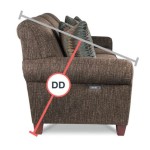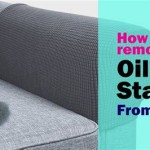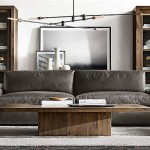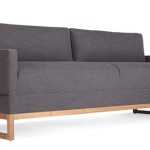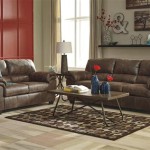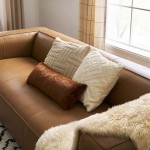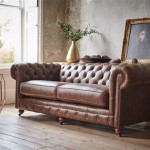Sofa Parts Description Diagrams: A Comprehensive Guide
Understanding the anatomy of a sofa is crucial for anyone involved in furniture design, manufacturing, upholstery, or even general repair and maintenance. A sofa, seemingly a simple piece of furniture, is actually a complex assembly of various components working in unison to provide comfort and support. This article provides a detailed description of sofa parts, accompanied by explanations of their function and common variations. Using diagrams as a reference, the complexities of sofa construction will be clarified, offering a valuable resource for professionals and enthusiasts alike.
Diagrams play a vital role in comprehending the spatial relationships between various sofa components. These visual aids typically illustrate exploded views, cross-sections, and detailed close-ups of specific areas. They help to identify the location, shape, and connection method of each part. Different diagrams may emphasize different aspects of the sofa, such as the frame construction, the upholstery layers, or the spring system. Therefore, it is beneficial to consult multiple diagrams to gain a complete understanding of the sofa's construction.
The description of each part will include its common materials, its primary function, and any significant variations in its design. The information provides a foundation for understanding how the individual components contribute to the overall performance and longevity of the sofa.
Key Point 1: The Internal Frame and Support Structure
The internal frame forms the skeletal structure of the sofa and is responsible for providing the primary support. It dictates the overall shape, size, and weight capacity of the sofa. The frame is typically constructed from wood, metal, or a combination of both.
Wood Frames: Hardwoods such as oak, maple, and birch are commonly used for high-quality sofa frames due to their strength and durability. These woods can withstand significant weight and resist warping or cracking over time. Softer woods like pine are sometimes used in less expensive sofas, but they are more susceptible to damage. The individual pieces of wood are typically joined using screws, dowels, glue, or mortise-and-tenon joints to create a rigid and stable structure.
Metal Frames: Steel is the predominant material for metal sofa frames, offering exceptional strength and resistance to bending or breaking. Metal frames are often used in modern sofa designs and can support complex shapes and mechanisms, such as reclining features. The metal pieces are typically welded together to create a seamless and strong connection.
Frame Components: The main components of the frame include the side rails, front rail, back rail, and corner blocks. The side rails run along the sides of the sofa, providing the overall length and supporting the arms. The front and back rails connect the side rails, defining the front and back of the sofa and adding stability. Corner blocks are small pieces of wood or metal attached to the corners of the frame to reinforce the joints and prevent them from separating. These blocks distribute stress and ensure the frame maintains its structural integrity.
Legs: Sofa legs provide elevation and support, distributing the weight of the sofa evenly across the floor. Legs can be made from wood, metal, plastic, or a combination of materials. They are typically attached to the frame using screws, bolts, or dowels. The design of the legs contributes significantly to the overall aesthetic of the sofa, with styles ranging from simple tapered legs to ornate carved legs.
Spring Systems: A robust spring system is crucial for providing comfort and support in the seating area. Several types of spring systems are commonly used in sofas, each offering different levels of support and resilience. These include:
Coil Springs: Also known as Marshall coils or pocketed coils, these springs are individually wrapped in fabric pockets and are arranged in rows across the seating area. Coil springs provide excellent support and conform to the body's contours, minimizing motion transfer between occupants.
Sinuous Springs: These are S-shaped wires that run horizontally across the frame, providing a resilient and supportive base for the cushions. Sinuous springs are less expensive than coil springs and offer a firmer feel. They are attached to the frame with clips or fasteners and are often interconnected with tie wires to prevent sagging.
Webbing: Webbing consists of strips of fabric or rubber that are stretched across the frame to create a supportive platform. Webbing is less expensive than springs and is often used in budget-friendly sofas. It offers a less resilient feel compared to springs and may sag over time.
Key Point 2: Upholstery Layers and Components
The upholstery layers comprise the outer covering of the sofa, contributing significantly to its comfort, appearance, and durability. These layers typically consist of padding, cushioning, and the outer fabric.
Padding: Padding is the layer of material that sits directly on top of the frame and spring system, providing a soft and comfortable surface for the cushions. Common padding materials include:
Foam: Polyurethane foam is the most common padding material, offering a balance of comfort, support, and affordability. Foam comes in various densities, with higher-density foams providing firmer support and greater durability. Memory foam is a type of foam that conforms to the body's shape, providing customized comfort.
Fiberfill: Polyester fiberfill is a lightweight and fluffy material that is often used to wrap the foam padding, creating a softer and more rounded appearance. Fiberfill is less expensive than foam but may compress over time.
Batting: Cotton batting is a natural fiber material that is often used in traditional upholstery. Batting provides a soft and breathable layer of padding.
Cushions: Sofa cushions provide the primary seating surface and contribute significantly to overall comfort. Cushions can be attached to the frame or loose.
Attached Cushions: These cushions are sewn directly to the sofa frame, providing a neat and tailored appearance. Attached cushions are more difficult to replace or clean than loose cushions.
Loose Cushions: These cushions are removable and can be flipped, rotated, or replaced easily. Loose cushions offer greater flexibility and convenience compared to attached cushions.
Cushion Fillings: Cushion fillings determine the cushion's comfort level and shape retention. Common cushion fillings include:
Foam: Foam cushions are durable and supportive, maintaining their shape well over time. As with padding, foam cushions come in various densities offering different levels of firmness.
Feather: Feather cushions are soft and luxurious, conforming to the body's shape. However, feather cushions require regular fluffing to maintain their shape and can be more expensive than foam cushions.
Down: Down cushions are even softer and more luxurious than feather cushions, providing exceptional comfort. Down cushions are also more expensive and require more maintenance.
Fiberfill: Fiberfill cushions are lightweight and inexpensive, offering a softer feel than foam cushions. However, fiberfill cushions may compress over time and require more frequent replacement.
Upholstery Fabric: The outer fabric covers the padding and cushions, providing the final aesthetic and tactile surface of the sofa. The choice of fabric significantly impacts the sofa's appearance, durability, and ease of maintenance. Common upholstery fabrics include:
Cotton: Cotton is a natural fiber fabric that is soft, breathable, and relatively inexpensive. However, cotton is susceptible to staining and fading.
Linen: Linen is another natural fiber fabric that is strong, durable, and has a distinctive textured appearance. Linen is more resistant to staining than cotton but can wrinkle easily.
Wool: Wool is a natural fiber fabric that is warm, durable, and stain-resistant. Wool is more expensive than cotton or linen but offers superior performance.
Leather: Leather is a natural material that is durable, luxurious, and develops a unique patina over time. Leather is more expensive than fabric but offers exceptional longevity.
Synthetic Fabrics: Synthetic fabrics such as polyester and microfiber are durable, stain-resistant, and relatively inexpensive. Synthetic fabrics are often used in high-traffic areas or in homes with pets and children.
Key Point 3: Detailing and Decorative Elements
Beyond the structural and functional components, sofas often incorporate various detailing and decorative elements that enhance their aesthetic appeal and overall style.
Arm Styles: Sofa arms come in a variety of styles, each contributing to the sofa's overall design. Common arm styles include:
Rolled Arms: These arms have a curved, rounded shape and are often found in traditional sofa designs.
Track Arms: These arms are straight and flat, offering a clean and modern look.
Pillow Top Arms: These arms are padded with extra cushioning, providing enhanced comfort.
English Arms: These arms are slightly rolled and set back from the front of the sofa, creating a more relaxed and informal appearance.
Back Styles: The back of the sofa also contributes to its overall style and comfort. Common back styles include:
Tight Back: This back is upholstered directly to the frame, providing a neat and tailored appearance.
Pillow Back: This back features loose cushions that are placed against the frame, offering a more relaxed and comfortable feel.
Button Tufting: This decorative technique involves attaching buttons to the fabric in a regular pattern, creating a textured and elegant look. Button tufting is often used on traditional sofas.
Channel Tufting: This technique involves creating vertical channels in the fabric, adding visual interest and texture. Channel tufting is often used on modern sofas.
Piping and Welt: Piping and welt are decorative trims that are sewn along the edges of the cushions and frame, adding definition and detail. Piping and welt can be made from the same fabric as the upholstery or from a contrasting fabric.
Skirts: A skirt is a fabric covering that extends from the bottom of the sofa to the floor, concealing the legs and frame. Skirts can be pleated, gathered, or straight, adding a touch of elegance to the sofa.
Throw Pillows: Throw pillows are decorative cushions that are placed on the sofa to add color, texture, and comfort. Throw pillows can be made from various fabrics and filled with down, feather, or fiberfill.

These Are The Parts Of A Sofa Ilrated Diagram

These Are The Parts Of A Sofa Ilrated Diagram Home Stratosphere

Image Result For Parts Of A Sofa

These Are The Parts Of A Sofa Ilrated Diagram

Sofa Cushion Foam Diagram Google Search

Sofa Cushion Foam Diagram Google Search

American Craftsmanship Hickory Home Furniture

Diagram Of Renaissance Revival Sofa Probably From New York Circa 1870 Anatomy

Facts About Leather Furniture Full Grain Furnishings

Order Replacement Parts Recliner Franklin Corporation
Related Posts

